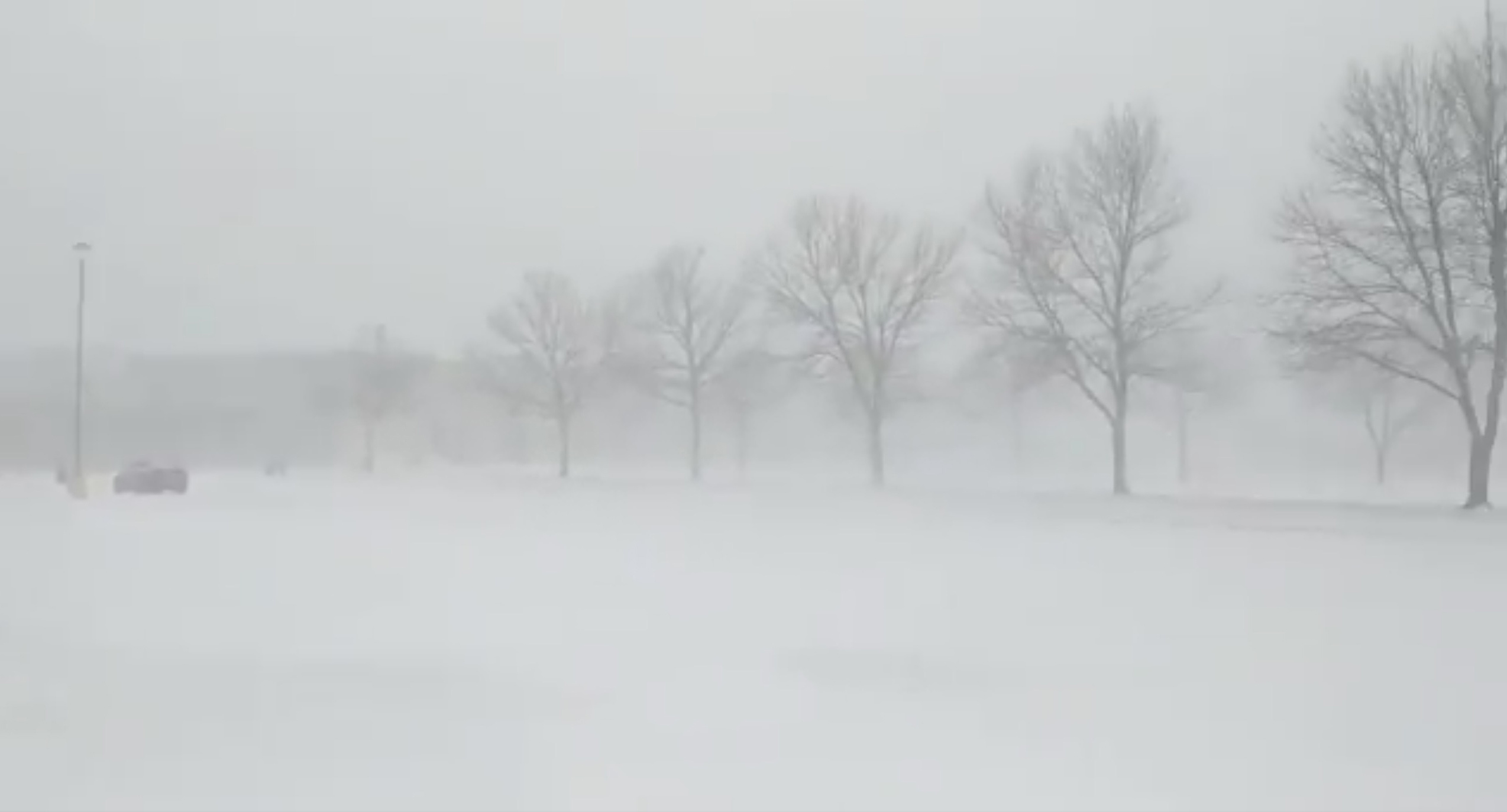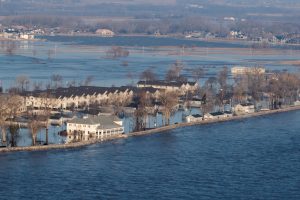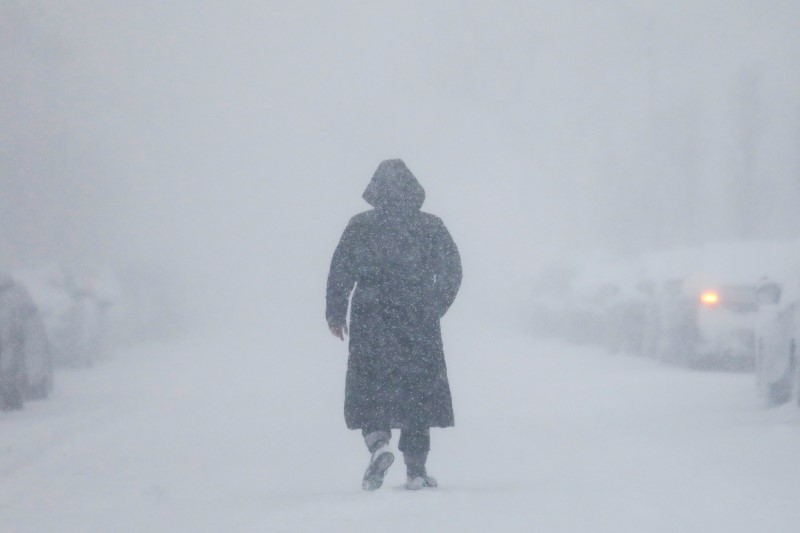
By Keith Coffman
DENVER (Reuters) – A powerful storm bringing heavy snowfall and strong winds was churning across the U.S. Plains and Midwest on Thursday, a day after a blizzard in the Rocky Mountains grounded flights, caused power outages and raised fears of further Midwest flooding after a deluge last month.
Warm spring temperatures on Tuesday, upwards of 80 degrees Fahrenheit in Denver, gave way to frigid 20s, heavy snow, gale-force winds and life-threatening conditions through Thursday, the National Weather Service said.
David Roth, a meteorologist with the weather service’s Weather Prediction Center, said that while the Rockies were expected to receive constant precipitation until Saturday, the center of low pressure of the blizzard was spinning into the U.S. Plains and Midwest.
Roth said the storm system will turn northeast into Minnesota late on Thursday and then slowly move into Lake Superior by Friday night.
Heavy snow with blizzard conditions was expected through Thursday night in southeastern South Dakota and southwestern Minnesota, the weather service said.
Despite the severe weather, crew members at Denver International Airport worked through the night to remove snow from runways, and only about 180 flights were canceled on Thursday morning, down from more than 700 a day earlier, according to FlightAware.come, a flight tracking service, and airport officials.
“Some cancellations and delays are expected today, so be sure to check your flight status with your airline!” airport officials wrote on Twitter on Thursday.
Residents throughout the north-central United States could expect downed trees, widespread power outages, road closures and treacherous driving through Friday, the NWS said.
More than 10,000 homes and businesses were without power in South Dakota and about another 10,000 in Minnesota early Thursday.
Officials in Colorado ordered state government offices in 54 counties to be closed on Thursday, according to a statement posted on Facebook. Government offices in Denver were closed on Wednesday afternoon due to weather conditions, according to a statement on the state’s website.
Brian Hurley, another meteorologist with the weather service, had previously described the powerful blizzard as a “bomb cyclone,” the second one to hit the area in two months.
“This is like a slow-moving snowstorm inside a hurricane,” Hurley said, adding that wind gusts were upwards of 100 mph on Wednesday in eastern Colorado.
In March, another “bomb cyclone,” which involves a rapidly intensifying cyclone, triggered heavy rain over the region and combined with melting snow to cause flooding along the Missouri River and its tributaries. Damages and losses to property, cattle and crops in Nebraska and Iowa alone were estimated at more than $3 billion .
This week’s weather system is expected to weaken and move to the Great Lakes area on Friday, bringing rain and snow to that region, the Weather Service said.
“All that snow is going to melt sooner rather than later, and it’ll all flow into the Missouri River basin,” Hurley said.
(Additional writing and reporting by Rich McKay in Atlanta; additional reporting by Andrew Hay in Taos, New Mexico; Gina Cherelus in New York and Alex Dobuzinskis in Los Angeles; editing by Larry King and Bernadette Baum)
















